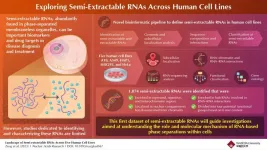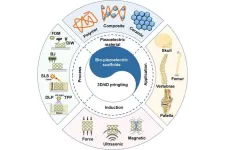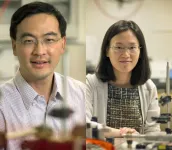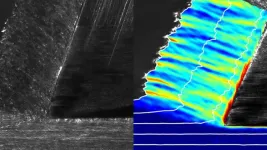Membraneless organelles (MLOs), also known as “biomolecular condensates,” are formed by the biological process of liquid-liquid phase separation (LLPS). MLOs are highly dynamic bodies containing proteins and nucleic acids. While the role of proteins in LLPS has been extensively investigated, there is a growing interest in the scientific community to understand the role of RNAs—the nucleic acid responsible for innumerable biological functions including coding, decoding, regulation, and expression of genes, and ultimately proteins—in phase separation.
Recent studies have revealed that MLOs are rich in RNAs that are poorly extracted by conventional methods but can be efficiently recovered using improved methods like needle shearing and heating, a property known as semi-extractability. These semi-extractable RNAs can be important biomarkers and drug targets in disease diagnosis and treatment. However, very few studies have succeeded in identifying and characterizing these RNAs.
To address this gap, Dr. Chao Zeng, assistant professor at Waseda University, in collaboration with Dr. Michiaki Hamada from Waseda University, Dr. Takeshi Chujo from Kumamoto University, and Dr. Tetsuro Hirose from Osaka University, have developed a novel bioinformatic pipeline to define semi-extractable RNAs across human cell lines. Their findings were published in the journal Nucleic Acids Research on July 19, 2023.
The team performed cellular RNA extraction and sequencing on five human cell lines, namely, A10, A549, HEK293, HeLa, and HAP1 cells. They further analyzed the RNA sequencing data using various computational methods. Differential expression analysis was performed between samples extracted using the conventional RNA extraction method and the improved extraction method. The researchers identified RNA transcripts that were consistently semi-extractable in all five cell lines. Repeat density and sequence motif analysis were also conducted to explore potential factors influencing semi-extractability. Additionally, the researchers performed k-mer analysis using the SEEKR algorithm to functionally classify semi-extractable RNAs based on their k-mer content.
Sharing the highlight of their study, Chao Zeng explains, “Using the newly developed bioinformatic analysis pipeline, we examined original experimental data from cultured human cell types and successfully identified and characterized 1,074 semi-extractable RNAs potentially involved in the formation of phase-separated membraneless organelles.”
Upon investigating the localization of semi-extractable RNAs in chromatin as well as within the cell, the team found that these RNAs were enriched in repressed and repetitive heterochromatin (darkly staining) regions, especially in Polycomb-repressed areas. Inside the cells, the RNAs were concentrated in the nucleus, including the nucleolus, but disassociated from the chromatin.
Additionally, the researchers postulated that the semi-extractable RNAs could potentially function as a platform for interacting with other RNAs. To verify their hypothesis, they compared semi-extractable RNAs with close to 600 hub RNAs forming protein-mediated RNA-RNA interactions with multiple other RNAs. They found that semi-extractable RNAs indeed acted as hubs and were pivotal in forming RNA-RNA interactions.
Further analysis of semi-extractable RNA revealed a marked preference of RNA-binding proteins in binding to AU-rich regions associated with the RNAs. While messenger RNAs typically exhibit the AU-rich regions at the 3’ end, which regulates RNA stability, semi-extractable RNAs exhibited a concentration of AU regions at the 5’ end, indicating potential involvement in undiscovered functions.
The study provides the first dataset of semi-extractable RNAs across human cell lines, which is a valuable resource for investigating RNA-based phase separations. “Future integration of semi-extractable RNAs with RNA interaction studies will provide insights into the molecular mechanisms underlying RNA-induced phase separation in cells,” concludes Michiaki Hamada enthusiastically.
The study findings provide new perspectives to explore the involvement of RNA in biological processes such as cancer development and progression, viral RNA degradation, and cellular stress responses, and can drive the development of therapeutic strategies for cancer and infectious diseases.
***
Reference
DOI: https://doi.org/10.1093/nar/gkad567
Authors: Chao Zeng 1, Takeshi Chujo 2, Tetsuro Hirose 3,4, Michiaki Hamada 1,5,6
Affiliations
1Faculty of Science and Engineering, Waseda University, Tokyo 1698555, Japan
2Faculty of Life Sciences, Kumamoto University, Kumamoto 8608556, Japan
3Graduate School of Frontier Biosciences, Osaka University, Suita 5650871, Japan
4Institute for Open and Transdisciplinary Research Initiatives (OTRI), Osaka University, Suita 5650871, Japan
5AIST-Waseda University Computational Bio Big-Data Open Innovation Laboratory (CBBD-OIL), National Institute of Advanced Industrial Science and Technology, Tokyo 1698555, Japan
6Graduate School of Medicine, Nippon Medical School, Tokyo 1138602, Japan
Funding information
This work was supported by JST CREST [grant no. JPMJCR20E6], AMED [grant nos. JP22ama121055, JP21ae0121049 and JP21gm0010008], JSPS KAKENHI [grant nos. 20H00448, 21H05276, 22K19293, 22H04925, 20H00624, 17K20032, 20K15784 and 22K15093].
About Waseda University
Located in the heart of Tokyo, Waseda University is a leading private research university that has long been dedicated to academic excellence, innovative research, and civic engagement at both the local and global levels since 1882. The University has produced many changemakers in its history, including nine prime ministers and many leaders in business, science and technology, literature, sports, and film. Waseda has strong collaborations with overseas research institutions and is committed to advancing cutting-edge research and developing leaders who can contribute to the resolution of complex, global social issues. The University has set a target of achieving a zero-carbon campus by 2032, in line with the Sustainable Development Goals (SDGs) adopted by the United Nations in 2015.
To learn more about Waseda University, visit https://www.waseda.jp/top/en
About Assistant Professor Chao Zeng
Dr. Chao Zeng is a junior researcher and an assistant professor in the Faculty of Science and Engineering at Waseda University, Japan. He is a member of the RNA Society of Japan, the Japanese Society for Bioinformatics (JSBi), and the Molecular Biology Society of Japan. His research interests include life-, health-, and medical informatics, with a special focus on long noncoding RNAs. Dr. Zeng has around 10 publications to his credit.
About Professor Michiaki Hamada
Dr. Michiaki Hamada is a professor in the Faculty of Science and Engineering at Waseda University and is the principal investigator in the Bioinformatics Laboratory, Japan. He has been a distinguished member of Japanese Society of Bioinformatics (JSBi) since 2014 and is currently the vice-president of JSBi. His interests include RNA informatics, sequence analysis, epigenetics, data-mining, and machine learning. He aspires to develop revolutionary tools in the analysis of biological data and has been honored with multiple awards.
END








